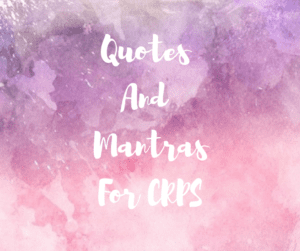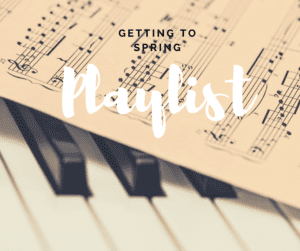 By Guest Blogger Melissa Wardlaw
By Guest Blogger Melissa Wardlaw
As a patient with CRPS/RSD, I am lucky to have a pain-management physician I have been partnered with since 2004 whom I trust, who trusts me and who understands my complex medical issues. As I have visited many physicians and other specialists on my medical journey before and after partnering with him, clearly this hasn’t always been the case! Recently I spoke to an audience of healthcare professionals at a healthcare conference, and left them with this takeaway of some helpful treatment
tips I have comprised in all my years as a CRPS/RSD, chronic illness & pain patient.
1. Patients with CRPS/RSD are on individual journeys and every patient is different! Even though most patients have similar symptoms and the common theme is very severe pain that is greater and lasts longer than the scope of the inciting event/injury, these symptoms can vary in duration, intensity and overall disability. Also, many CRPS patients have comorbid (simultaneous) medical conditions which may bring additional challenges unique to treating each patient.
2. Be a Healthcare Partner! Because CRPS/RSD is so poorly understood with so many differences in opinions amongst practitioners, often times patients know more about CRPS/RSD than their practitioners; but they especially know more about THEIR individual conditions and how CRPS affects them. Listen closely. Educate. Find out patients’ goals. Help come up with strategies together that work specifically for each patient, thus being a partner in solution-oriented healthcare.
3. Treat the whole person instead of the disease! This means gaining insight into hormonal, endocrine, psychosocial, and biochemical processes to ensure the patients’ systems are in balance – this will allow the greatest opportunity for treating CRPS/RSD. If patients are generally healthy in the body and mind, they will be more apt to accept chronic healing.
4. Watch for supplemental symptoms and medical issues CRPS/RSD can cause! With the punishing, continuous and extreme physical stress and severity of pain/symptoms resulting from CRPS/RSD, patients may develop cardiac conditions, situational anxiety/depression, insomnia, PTSD, high blood pressure, diabetes, internal organ issues, IBS and the like. It is important not to ignore these additional symptoms and medical conditions that may arise.
5. The Goal of treating CRPS/RSD is to calm down the patient’s nervous systems, and not bring more stimulation to an already misfiring nervous system in overdrive! CRPS is similar to a PC motherboard being dropped in water and malfunctioning. Calming down the fight or flight response occurring in the patient’s body is necessary. This is accomplished through various methods, treatments, medications and coping strategies. However, beware of overstimulating the body further and treating patients as guinea pigs. Also, as every patient is different, what might work for one patient might not work for another. There is a reason CRPS stands for COMPLEX regional pain syndrome!
6. Primary goals of treatment are really three-fold:
a. To increase function/normalcy (this might be different for each patient)
b. To reduce pain/symptoms and gain better control over them (better management, not necessarily abatement)
c. To improve overall quality of life (not necessarily back to one’s “old life”)
7. CRPS/RSD is an INVISIBLE chronic illness (for the most part)! Most CRPS patients look/sound “normal” depending on other co-morbid medical issues. There can be some visible signs of illness; however symptoms may wax and wane. In the goal of fitting in with society, many patients have learned ways of hiding or masking their visible signs of illness & disability. It is important to ask patients to describe symptoms disabling to them (and why), and have them document and take
pictures of visible and invisible symptoms, and bring this information to their appointments in an effort to maximize time.
8. Help patients find additional specialists and resources to aid in their overall chronic (and general) health.
These may include:
a. Chronic Illness & Pain (and Grief/Loss) Counselors, Hypnotherapists, Psychiatrists, etc.
b. Physical (Water) & Occupational Therapists, Pilates/Yoga, Tai Chi Instructors, etc.
c. Naturopathic Practitioners (i.e., Acupuncturists, Nutritionists, Massage Therapists, Chiropractors, etc.)
d. Interventional Pain Management Physicians, Neurologists, Endocrinologists, Rheumatologists, Hormone Specialists
e. Support Groups (both in-person and online), Churches, Friends/Family, Service Animals, etc.
f. Online Resources & Patient Advocacy Groups (i.e., RSDSA, RSDHope, US Pain Foundation)
9. Be Kind, Empathetic & Compassionate! You may not have all the answers, however what may help patients the most is a healthcare professional who treats them with respect and takes the time to listen, understand, not judge or make them feel their illness/pain is “all in their heads,” because it is not! You would be surprised just how much a little compassion and kindness can help a patient (of any kind), especially one who is having a bad day.
10. Be Honest! If you don’t know what to do to help the patient, tell them this, but be prepared to refer them to someone who can. A patient will respect you much more if you are honest and sincere, but in a respectful manner.
11. Help set realistic goals! Many times patients have the goal of “fixing” or curing CRPS/RSD (which is an incurable illness) and getting back to their old lives. Sometimes they may see this as the only option with treatment. Helping to reset their expectations and mindset goes a long way to the overall management of the disease. While remission is possible, it is rare and flares are common. Working WITH the disease as opposed to AGAINST it will go much further than trying to completely eradicate it. That way if remission does occur, it is a huge bonus!
12. The best options for treatment are multi-faceted! Educate the patient on the many options they have, from the noninvasive to invasive and everything in between. There may be some residual (justified) fear about procedures and the like, so take cues and respect patients’ comfort levels, while encouraging them to work through them at the same time.
13. Opiates are ok! While opiate medications should not be the first choice for CRPS/RSD (or any illness), many CRPS patients are successfully treated long-term with opiates, especially if co-morbid chronic illness & pain conditions exist. Most CRPS patients present with very severe, continuous and disabling pain; and while CRPS has no specific medications of its own on the market, opiates are made specifically to treat pain. The key is to educate the patient/caregiver(s) on the pros/cons of opiate therapy, and screen/monitor for risk factors. Most statistics put legitimate patients becoming “addicted” to opiates around 1-3%; this is extremely low, so don’t be intimidated or scared to use them as part of an overall multi-modal pain management strategy. First and foremost, your duty as a healthcare professional is to help the patient and “do no harm.”
14. Most CRPS/RSD patients are educated, professional members of society! We are mothers, fathers, sisters, brothers, sons and daughters. CRPS/RSD is a devastating chronic illness, often changing patients’ lives in a split second and robbing us of our careers, activities, family lives, educational pursuits, relationships and life purposes up to that point. It isn’t called the “suicide disease” for no reason. The pain does get that bad. It is important to understand that many patients are going through the most difficult time of their lives, as are their families and loved ones. The loss and grief is palpable. Helping them to focus on the good they do still have in their lives is critical to survival. Professional assistance is very helpful, not only for patients, but also for spouses/caregivers and loved ones because their lives have changed dramatically also.
15. Encourage patients to continue on with normal activities as much as possible! With the all-consuming nature of CRPS/RSD, it has a tendency to take away patients’ abilities to do things they used to do. However, the more they can participate in tasks they enjoy and love, the more it will help with overall healing and finding a purpose again. Finding activities that distract the pain and allow for natural endorphins to kick in, the better patients will feel, at least temporarily, and thus will slowly gain strength and control over the long term effects of CRPS/RSD. It will be a multiplier of confidence and positivity that will show patients they are not defined by their disease(s) and are still valued members of society!
NOTE: Opinions expressed are solely my own and do not represent the views or opinions of other CRPS/RSD patients or practitioners.
Bio:
Melissa Wardlaw was diagnosed with CRPS/RSD (now full-body involvement) as a result of a spinal cord injury suffered in 2002 during routine epidural steroid injections. She also has fibromyalgia, lumbar/cervical degenerative disk disease, migraines and additional chronic medical issues. Formerly a high-powered Business Executive & Consultant in start-up operations and HR, Melissa has an MBA in entrepreneurship, is a Certified Career Coach and Certified Professional Resume Writer, and now spends her time career coaching and offering peer support/counseling & advocacy (pro bono) as her health will allow. She also runs both in-person and online support/empowerment groups for CRPS/RSD, chronic illnesses & pain in Metro Atlanta. Melissa is also an avid volunteer and supports multiple organizations committed to rescuing animals and helping others with chronic illnesses & pain. She has two Ragdoll cats, who graciously “allow” her to live in their brand new home in Atlanta, GA.
Contact Information:
Melissa Wardlaw, Atlanta, GA
Email: [email protected]

 By Samantha Anderson
By Samantha Anderson By Samantha Anderson
By Samantha Anderson Written by Samantha Anderson for the RSDSA blog
Written by Samantha Anderson for the RSDSA blog Written by Samantha Anderson for the RSDSA blog.
Written by Samantha Anderson for the RSDSA blog. By Guest Blogger Melissa Wardlaw
By Guest Blogger Melissa Wardlaw Written by Michael Sullivan PT, MSPT for the RSDSA blog.
Written by Michael Sullivan PT, MSPT for the RSDSA blog.